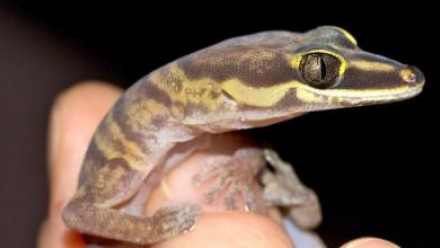Species discovery and refugia in the monsoonal tropics
Evolutionary refugia are landscapes within which the biota persisted through past (e.g. late Quaternary) climate changes. Identification of these is a priority for conservation planning under impending climate change.
We propose a study that demonstrates how the combination of high-resolution spatial analysis of environments with population genomics can provide robust methods to identify such refugia. Our focus is on northern Australian bioregions, especially the Mt Isa Inlier (MII) and Gulf Fall Uplands (GFU), and including adjacent plains and uplands, including the focus here - the Einasleigh Uplands (EIU) of Nth Qld. The 'Selwyn Ranges' (MII) were identified as a potential arid zone refugium by Morton et al., yet the biota here is poorly known. The MII and GFU are identified as area highly vulnerable to projected climate change (Dunlop et al. 2012, CSIRO) and are generally underrepresented in the National Reserve System. Understanding the spatial dynamics of the biota here under past climate change will therefore inform strategies for protecting these systems under future change.
Samples and metadata: Though these bioregions are known to support several endemic species of vertebrates, and preliminary genetic analyses have revealed cryptic lineages within several species, museum specimens with accompanying tissues, or even just non-vouchered tissues, are extremely sparse throughout. The intent of this preliminary trip is to engage with Townville based CSIRO scientists (Vanderduys and Perry) and to conduct a joint three day field trip to the EIU to obtain specimens and tissues for key taxa of reptiles, that are also the focus of our work across MII and west through the Top End and Kimberley (e.g. Carlia spp., Gehyra spp., Heteronotia spp.). All vouchers, with tissues and field data will be deposited with an appropriate museum (QM or ANWC).
Genetic information and resources: Our sampling complements existing tissue collections in Australian museums. Vouchers will be taken according to current ethics protocols and geographic, habitat and phenotypic data collected, along with duplicate tissue samples. Resulting specimen data will be incorporated in museum data bases, and thus ALA.
Bioinformatics and statistical inference: We have existing bioinformatic pipelines for processing both species and genetic data, the latter obtained via Sanger sequencing (mtDNA) and a custom exon capture system for >3000 loci. Statistical inference methods are under development.
Partnerships
Craig Moritz - Principle investigator (RSB, ANU); Scott Keogh - Collaborator (RSB, ANU); Justin Perry - Collaborator (CSIRO), Eric Vanderduys - Collaborator (CSIRO), Simon Ferrier - Collaborator (CSIRO).









